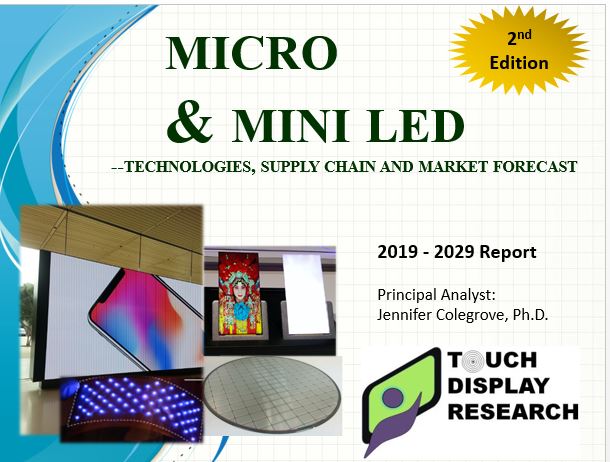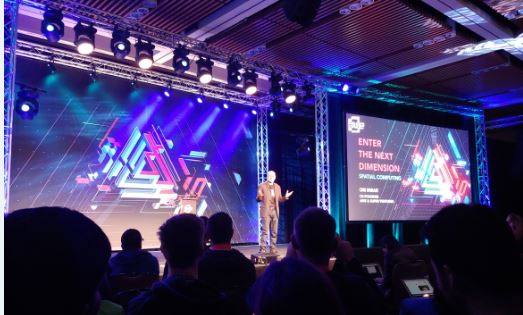June 11, 2019, By Jennifer Colegrove Ph.D. Principal Analyst, Touch Display Research Inc.
Micro LED and mini LED display could disrupt the whole display industry due to their benefits of high brightness, wide color gamut, low power consumption, fast response time, etc.
In the newly published “Micro & mini LED Technologies, Supply Chain and Market Forecast 2019-2029 Report, Second Edition,” Touch Display Research Inc., a market research and consulting firm, analyzed all the methods to fabricate micro and mini LED displays along with their supply chains.
Figure 1. Micro & mini LED Technologies, Supply Chain and Market Forecast 2019-2029 Report
Source: Touch Display Research, June 2019
There are 18 methods to fabricate micro and mini LED displays, and we analyzed and compared them one by one in the report. Our survey found that the micro and mini LED display are gaining momentum. The number of enterprises working on micro and mini LED has increased to over 170 currently from 120 last year.
BOM (Bill of Material) of micro and mini LED digital signage, direct –view displays, microdisplays are provided in the report. This report also provides the Global display market forecast with details by display technologies to 2029: LCD, OLED, EPD, Micro & Mini LED display, and other display technologies.
Thanks for reading,
Dr. Jennifer Colegrove and team


